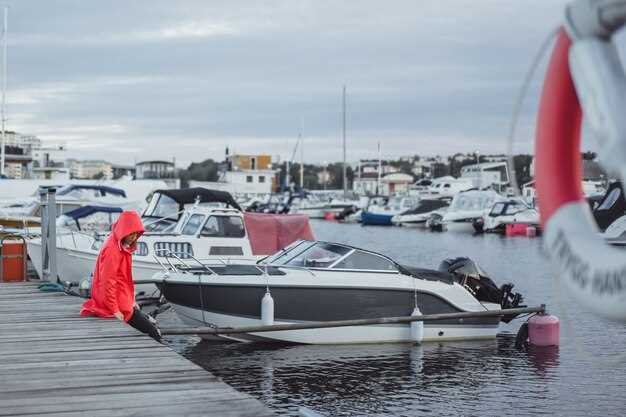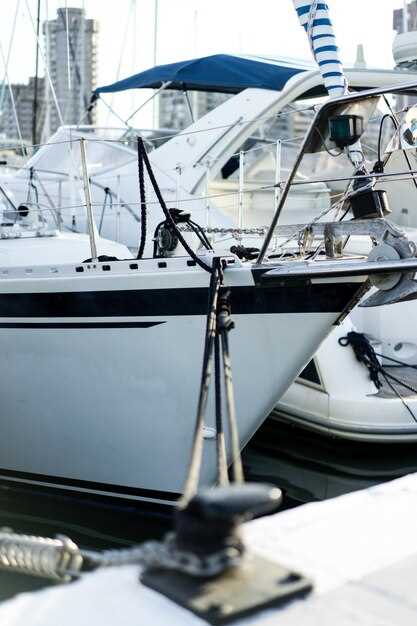
When it comes to purchasing a boat, the decision between new and used models can significantly impact your overall experience on the water. Both options present their own distinct advantages and challenges that demand careful consideration. Understanding what each choice entails is crucial for making an informed decision that aligns with your boating lifestyle and budget.
New boats often appeal to those seeking the latest technology, innovative designs, and warranty coverage. They come equipped with modern amenities and can be customized to meet your specific preferences. However, the initial financial outlay for a new vessel can be substantial, and depreciation may occur quickly, potentially affecting your investment.
On the other hand, used boats can offer significant savings and an opportunity to acquire a larger or better-equipped vessel than you might afford new. While buying used may come with concerns regarding maintenance and reliability, careful inspection and research can mitigate these risks. Understanding the history of a used boat and what you’re willing to compromise on is key to a satisfying purchase.
Ultimately, your decision should be guided by your boating goals, financial situation, and willingness to accept trade-offs. Whether you lean toward a new or used boat, knowing the pros and cons of each option will empower you to make the best choice for your aquatic adventures.
New vs Used Boats: Which Option is Right for You?
When considering the purchase of a boat, one of the first decisions you’ll face is whether to choose a new or used model. Each option has its advantages and drawbacks, making it crucial to evaluate your specific needs, budget, and preferences.
New boats generally come with the latest technology, modern designs, and warranties that provide peace of mind. They are built to current standards, showcasing the latest advancements in safety and efficiency. Additionally, opting for a new boat allows for greater customization, as many manufacturers offer configurations tailored to individual tastes and requirements.
On the other hand, used boats can offer significant savings, making them an appealing option for budget-conscious buyers. The initial purchase price is often lower, and you can find a quality used vessel that still has plenty of life left. Furthermore, used boats tend to depreciate less quickly than new boats, which can be an important factor if you decide to sell in the future.
However, purchasing a used boat comes with potential risks. Older models may require maintenance and repairs that can add to the overall cost. It’s essential to conduct thorough inspections and possibly involve a professional to ensure you’re making a sound investment. Additionally, the selection may be limited, and finding a used boat that meets all your criteria could take time.
Ultimately, the choice between new and used boats depends on your priorities. If having the latest features and customizing your boat to fit your lifestyle is essential, a new boat may be the right choice. Conversely, if you’re looking for a more affordable option and are willing to invest time in researching and inspecting various models, a used boat could be ideal. Assess your budget, usage plans, and personal preferences to make the most informed decision.
Evaluating the Long-Term Costs of New and Used Boats
When considering a boat purchase, understanding the long-term costs associated with new and used boats is crucial for making an informed decision. Both options come with unique financial implications that can affect your budget over time.
Initial Purchase Price
The first differentiating factor is the initial purchase price:
- New Boats: Generally, they come with a higher upfront cost due to the latest technology, warranties, and custom features.
- Used Boats: Typically more affordable, often costing significantly less than their new counterparts, making them appealing to budget-conscious buyers.
Depreciation
Depreciation is another essential cost to factor in:
- New Boats: Depreciate rapidly within the first few years, losing a substantial percentage of their value.
- Used Boats: Experience slower depreciation rates, allowing for better long-term value retention.
Maintenance Costs
Maintenance is an ongoing expense that varies with the age of the boat:
- New Boats: Often require fewer repairs initially, but routine maintenance can be costly if specialized services are needed.
- Used Boats: May require more frequent maintenance and repairs as components wear out, which can add up over time.
Insurance

Insurance costs can differ significantly based on the condition of the boat:
- New Boats: Generally come with higher insurance premiums due to their replacement value.
- Used Boats: Typically lower premiums, as the overall value is diminished.
Financing Options
The financing experience can vary for both categories:
- New Boats: Often have more attractive financing options available, including manufacturer incentives.
- Used Boats: May have less favorable financing terms, but lower overall loan amounts can mitigate this issue.
Fuel Efficiency
Fuel efficiency is another consideration that impacts long-term costs:
- New Boats: Usually equipped with more energy-efficient engines, leading to lower fuel costs over time.
- Used Boats: Older engines may not have the same efficiency, potentially leading to higher fuel expenses.
In summary, when evaluating long-term costs between new and used boats, it is vital to consider initial purchase prices, depreciation trends, maintenance duties, insurance costs, financing options, and fuel efficiency. By doing so, you can better determine which option aligns with your financial strategy and boating lifestyle.
Assessing Maintenance and Warranty Considerations for Different Boat Types
When choosing between new and used boats, understanding maintenance and warranty considerations is crucial for making an informed decision. Each option presents distinct factors affecting long-term ownership.
New boats typically come with comprehensive warranties that cover manufacturing defects and may also include extended service plans. This can provide peace of mind, especially for first-time boat owners. The warranty often covers major components such as the engine, hull, and electronics, which can significantly lower the cost of unexpected repairs during the warranty period. Additionally, new boats usually require less immediate maintenance, as they are equipped with modern technology and designs that enhance durability.
On the other hand, used boats may have limited or no warranty coverage, depending on the age and condition of the vessel. Buyers often assume the risk of existing wear and tear, which can lead to unexpected maintenance costs. Additionally, older boats may require more frequent servicing of systems and components that have experienced prolonged use. However, used boats might come at a lower initial price, allowing for a larger budget allocation for potential repairs and upgrades.
It is vital to conduct a thorough inspection and acquire a comprehensive maintenance history when considering used boats. This can provide insights into previous issues, helping to predict future maintenance needs. Furthermore, understanding the specific type and age of the used boat can inform buyers of common problems associated with that model, aiding in assessing potential future costs.
Ultimately, whether opting for new or used, an informed decision regarding maintenance and warranty can greatly affect your boating experience. Careful consideration of these factors will assist you in evaluating the true cost and satisfaction of boat ownership.
Understanding Financing Options for New vs Used Boats

When considering whether to purchase new or used boats, understanding the financing options available is crucial. Both avenues offer different financial pathways, impacting your budget and ownership experience.
For new boats, buyers often have access to manufacturer financing programs. These typically come with attractive interest rates and flexible payment terms. Some manufacturers might also offer cashback incentives or promotional financing options. It’s essential to compare these offers with those from banks or credit unions to ensure you’re getting the best deal.
Moreover, new boats generally come with warranties that can add peace of mind, which can be factored into the overall financing costs. However, remember that financing a new boat may require a larger down payment, and monthly payments can be higher due to the boat’s increased initial cost.
On the other hand, used boats present different financing scenarios. Financing options can be more limited, often depending on the age and condition of the boat. Some banks and credit unions might have stricter lending criteria for used boats, viewing them as higher-risk investments. This means buyers may pay higher interest rates or have shorter loan terms.
However, purchasing a used boat can lead to significant savings on the initial purchase price, which can offset some of the downsides of less favorable financing. Many buyers find that the lower price point allows them to pay cash, eliminating the need for financing altogether. This can simplify the buying process and reduce long-term costs associated with interest rates.
Ultimately, the choice between new vs used boats will significantly influence your financing options. Carefully evaluate your financial situation, consider your long-term boating goals, and assess available financing solutions to determine the best fit for your needs.



